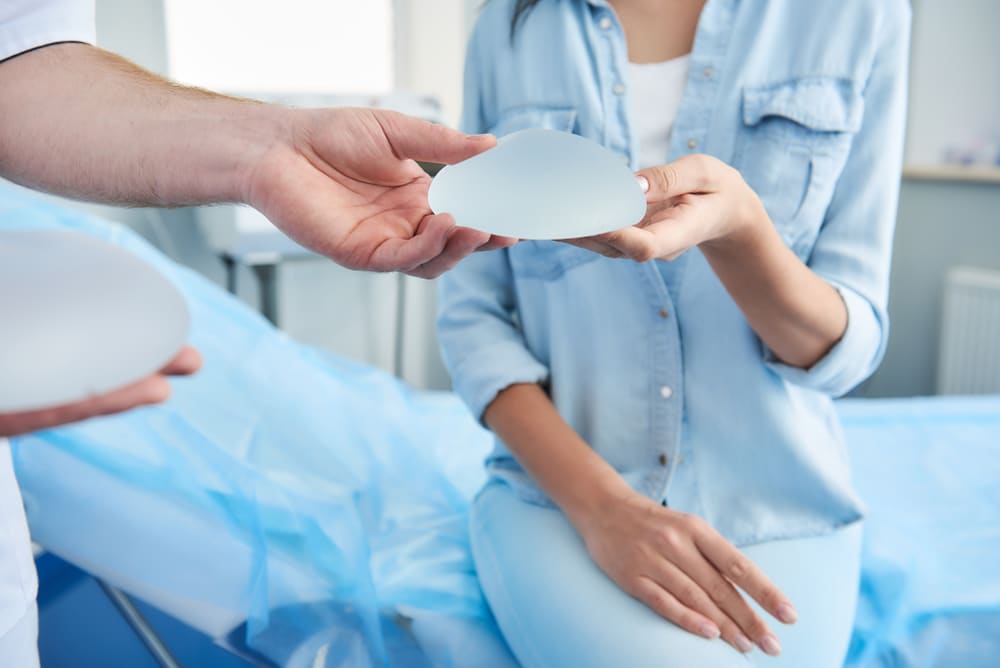Motiva Implants are changing the conversation around breast augmentation for women seeking a natural feel without compromising durability.
Dr. York Yates, a board-certified plastic surgeon, has years of experience in various breast surgeries. He now offers Motiva Implants at his practice in Layton, Utah, as a modern alternative to traditional implants.
What Are Motiva Implants?
Motiva Implants are next-generation silicone breast implants created with advanced materials and manufacturing standards. They feature a uniform gel and smooth outer shell, so they are designed to feel more natural and reduce the risk of certain complications. The Ergonomix™ model adapts to your body positions: the implants are more teardrop-shaped when you’re standing, and rounder when you’re lying down.

Motiva also includes safety features like the BluSeal® indicator, which helps confirm implant integrity before placement. While widely used internationally, some Motiva models are still undergoing regulatory review in the U.S., so availability may vary.
Benefits of Motiva Implants
Motiva Implants appeal to many patients because of their advanced features. Some of the key benefits include:
- Soft, responsive texture that closely mimics natural breast tissue
- Smooth surface that may reduce tissue irritation and inflammation
- Biocompatible materials intended to support long-term safety
- Ergonomix™ design that adapts to movement and body position
- Low reported rates of complications such as capsular contracture
- Suitable for both first-time breast augmentation and implant replacement
Why Choose Dr. York Yates Plastic Surgery?
Dr. Yates is a board-certified plastic surgeon who has practiced in Utah for years. After completing his surgical training in Missouri, he returned to join the Tanner Clinic, where his father worked as a family physician. Over time, Dr. Yates refined his practice to focus solely on cosmetic surgery of the breast and body. He’s known for “mommy surgeries” and is especially skilled in breast augmentation, tummy tuck, and fat transfer procedures.
He and his close-knit team also take pride in offering a more comfortable recovery process with no-intubation anesthesia options and 24/7 support through a secure patient communication app. This combination of surgical expertise and personalized care has made Dr. Yates a trusted choice for breast and body procedures in Layton and the Salt Lake City area.
Frequently Asked Questions
What Is The Difference Between Motiva And Traditional Silicone Implants?
Motiva implants are made with more adaptive silicone gel and feature a smooth outer shell that differs from traditional textured implants. The Ergonomix design allows the implant to shift shape depending on your body’s position.
How Long Do Motiva Implants Last?
Like all implants, Motiva does not have a set expiration date, but they are built with durability in mind. While long-term data is still being collected, some patients have had Motiva Implants in place for over a decade without issue.
Can I Breastfeed With Motiva Implants?
Yes, in most cases. Modern implant placement techniques typically preserve your ability to breastfeed, but this can depend on the incision site and your anatomy.
What Is Recovery Like With Motiva Breast Implants?
Recovery is usually smoother thanks to Dr. Yates’ no-intubation anesthesia and rapid recovery techniques. Most patients return to light activity within a few days.
Schedule a Consultation for Motiva Breast Implants in Layton
To learn whether Motiva Implants are right for your goals, contact Dr. York Yates Plastic Surgery in Layton, UT, at 801.525.8741. We’ll schedule your consultation and help you explore your breast augmentation options.

